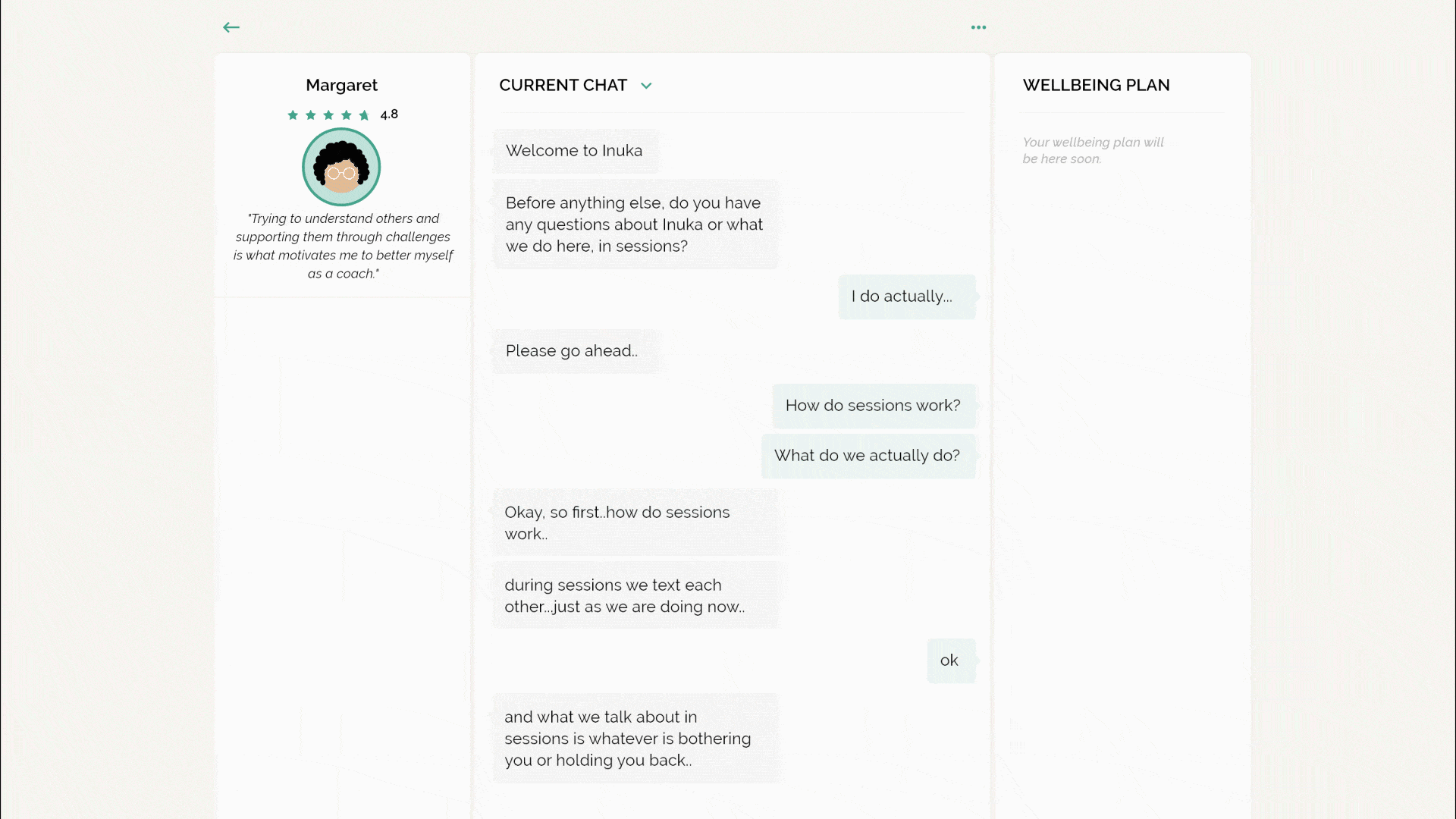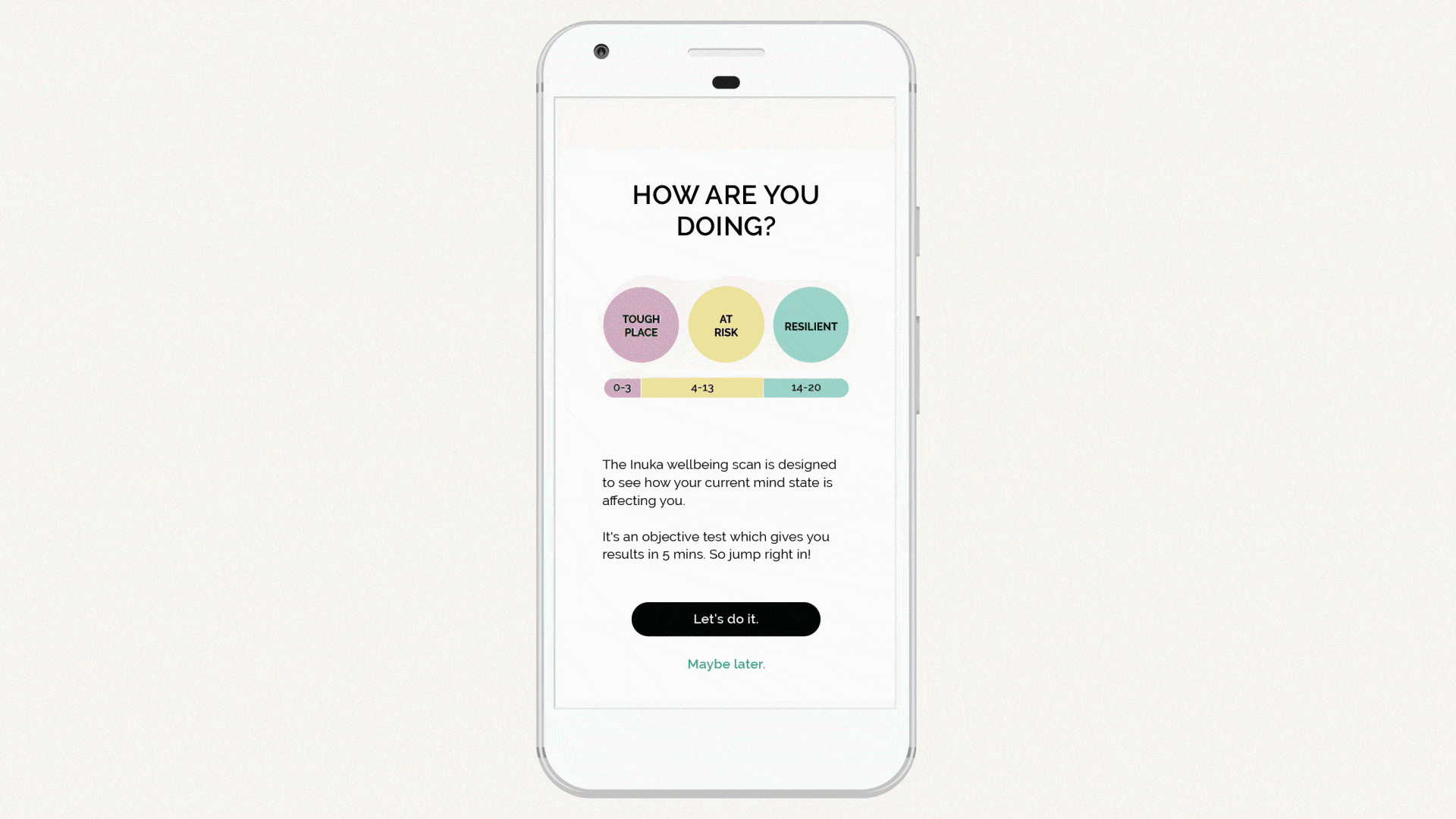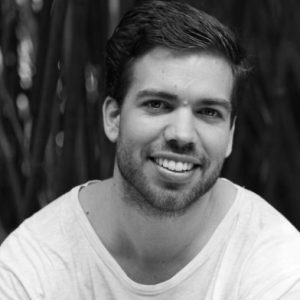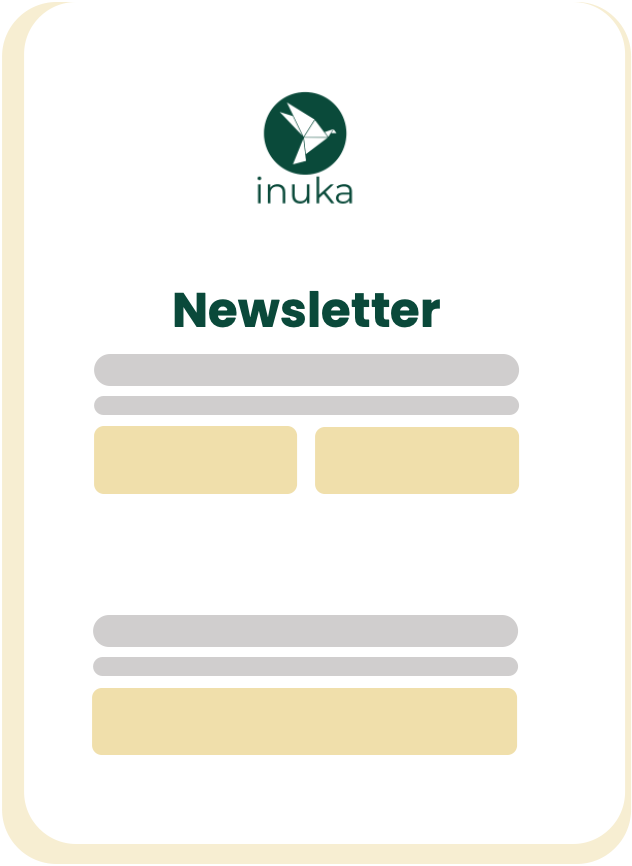A warm welcome to Inuka
“A warm welcome to Inuka! My name is Livian and I am here to guide you through your coming session(s) as your Inuka coach.”
This is how I normally start my coaching sessions. While the beginning of each session is similar and so is the general procedure, the content discussed is not. In fact, the InukaMethod is incredibly versatile and can be applied to all kinds of different topics – be it financial struggles, work stress, mourning, or even depression and anxiety. You might be wondering how this is possible. Well, continue reading and I will tell you all about it!

To start off, all coachees have to complete a self-scan before the first session. It is a scientifically validated wellbeing measurement tool that gives me (the coach) an idea of the situation of the coachee. Based on the result of the self-scan, my primary aim is to get to provide the coachee with appropriate help. This can mean either continuing with the sessions or recommending them to medical help in case they are in a critical situation. Throughout this article, I will focus on the former option as it is the case in the majority of coachees.

Listening & picking a problem
By asking questions and listening to what the coachee has to tell me, I try to draw a picture of what the coachee is currently going through, what factors led to this, and how this makes the coachee feel. Listening is an important part of this. Often, just having someone who they can talk to and let everything out to can already do wonders.
While the coachee tells me about their situation, I also take notes of the key problems that the coachee mentions. Throughout the session, I regularly share these with the coachee to help them better structure their thoughts. Once we have discussed the coachee’s situation, I encourage the coachee to pick one of the problems that they want to focus on for the session. This can either be a problem that they believe is most crucial or is the easiest to solve.
Thinking about solutions
Once a problem has been picked, I encourage the coachee to transform the problem into a goal. Once the goal has been set, we start to brainstorm possible solutions together. While the coachee brings up all possible solutions that come to their mind, my role is to help them to eventually pick one that is most promising to them. At this point, it is important to mention that as a coach, I do not want to give suggestions. My aim is purely to guide the coachee towards an action to be undertaken to tackle the problem, the coachee really does all the work themself!
Next, I try to help the coachee to break the solution chosen into concrete actionable steps. Together, we establish a SMART wellbeing plan, that the coachee carries out out until the next session. During the next sessions, I review the process of the wellbeing plan with the coachee. Together, we evaluate whether the action was successful or not. If it was successful and the problem was solved, we try to focus on another problem. If not, then we look into why it did not work out and try to figure out what we can do to make it work next time!

The formula for success
Normally, this process continues, until the coachee experiences a significant improvement and is fully equipped to deal with life’s challenges on their own again. This is measured by both the coachee’s feedback and also the self-scan which the coachee has to do again and is part of a well-being tracker. To ensure that the coachee’s improvement remains steady in the long term, I book follow-up sessions.
That was it, a coaching session in a nutshell!
In case some of your questions have remained unanswered, feel free to check out our website for more information, send me an email, or reach out to us via LinkedIn!





